A week is a long time in football.
One weekend, a team could be flying high, and the next, a season suddenly looks to be petering out or, worse still, derailing.
It’s a scenario all too familiar for Juventus at present.
Towards the end of January this campaign, Massimiliano Allegri’s side beat Lecce three-nil to go 16 matches unbeaten.
This impressive run of form included 13 wins and three draws.
Unsurprisingly, such a formidable run had the Turin-based side in contention for the Serie A title.
However, fast forward to the present, Juventus were met with a chorus of boos following a bore draw with Genoa.
The stalemate marked a continuingly miserable run of form, whereby Juventus have won only one of the last eight and drawn four during this spell in Italy’s top tier.
In this tactical analysis and team-focused scout report, we will focus on the Old Lady’s recent bad run to determine the factors that have led to their title collapse.
Furthermore, we will provide an analysis of how plausible it will be for Juve to salvage their season and identify if any changes to their tactics are required.
A fight for the top four
Juventus’ season has spiralled in the wrong direction.
Where there was once the hope of winning their first title since the 2019/20 campaign, Allegri’s side are now in real danger of not even securing a top-four finish.
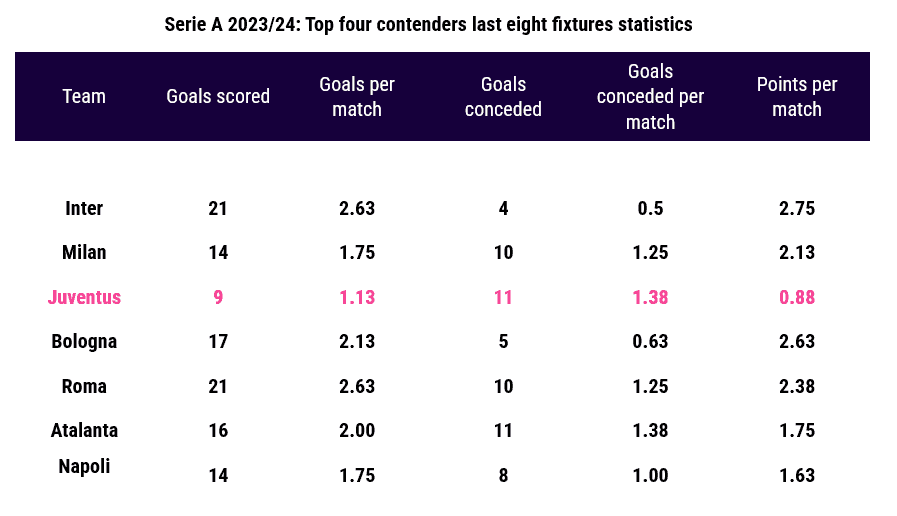
The above table shows the current form of the Serie A top four contenders in the past eight league fixtures.
In comparison to their rivals, Juventus’ poor attacking form is stark, as are their recent points per match.
With a further nine fixtures remaining, at the current rate, Juventus can expect to finish on 66 points.
Applying the same logic to the other clubs shown in the table, both Bologna and Roma would be expected to leapfrog Juve.
Consequently, Allegri’s men are not on course to finish in the top four.
Whilst the table alludes to poor attacking displays of late, the recent defensive displays have also left a lot to be desired.
Over the course of the season, Juventus has conceded 23 goals – only league leaders Inter have conceded less.
The Old Lady has, therefore, conceded 48% of their total league goals in their last eight fixtures alone.
The statistics point to a club in freefall and in desperate need of finding some form.
A need for a tactical identity
Considering the stature of Juventus as a club, a frustrating aspect for their fanbase at present is their distinct lack of playing identity.
The graph below shows the differing playing styles in Italy’s top tier this season.
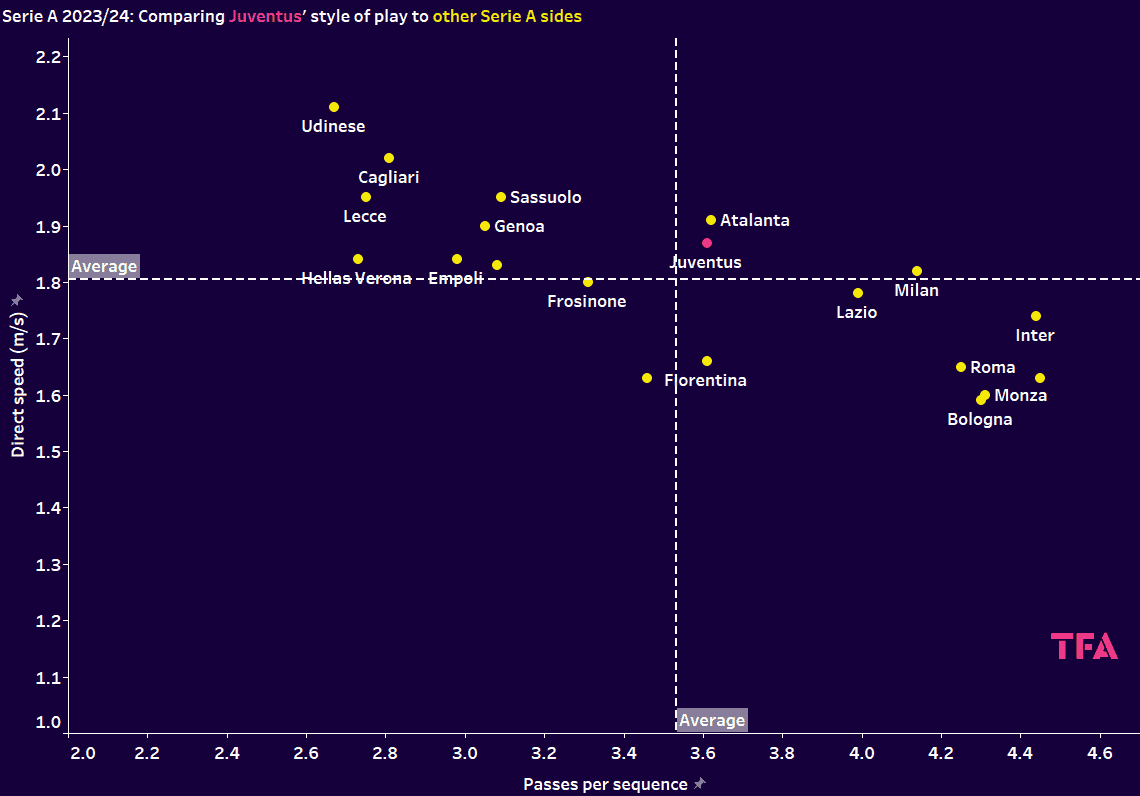
The above shows that Juventus is hovering around average in terms of direct speed as well as passes per sequence.
The evidence points to neither a side looking to launch counters nor one that dominates possession with a more intricate style.
Juve’s tendency to allow the opposition to dominate possession has been a theme throughout the campaign.
Even during their more positive spell, they would be content to sacrifice the ball, and in some matches, they had less than 40% of the play.
Allegri typically sets up his side in a 3-5-2 formation.
The Turin outfit has been built on an organised, compact shape under the Italian’s stewardship, as exemplified below against Milan.
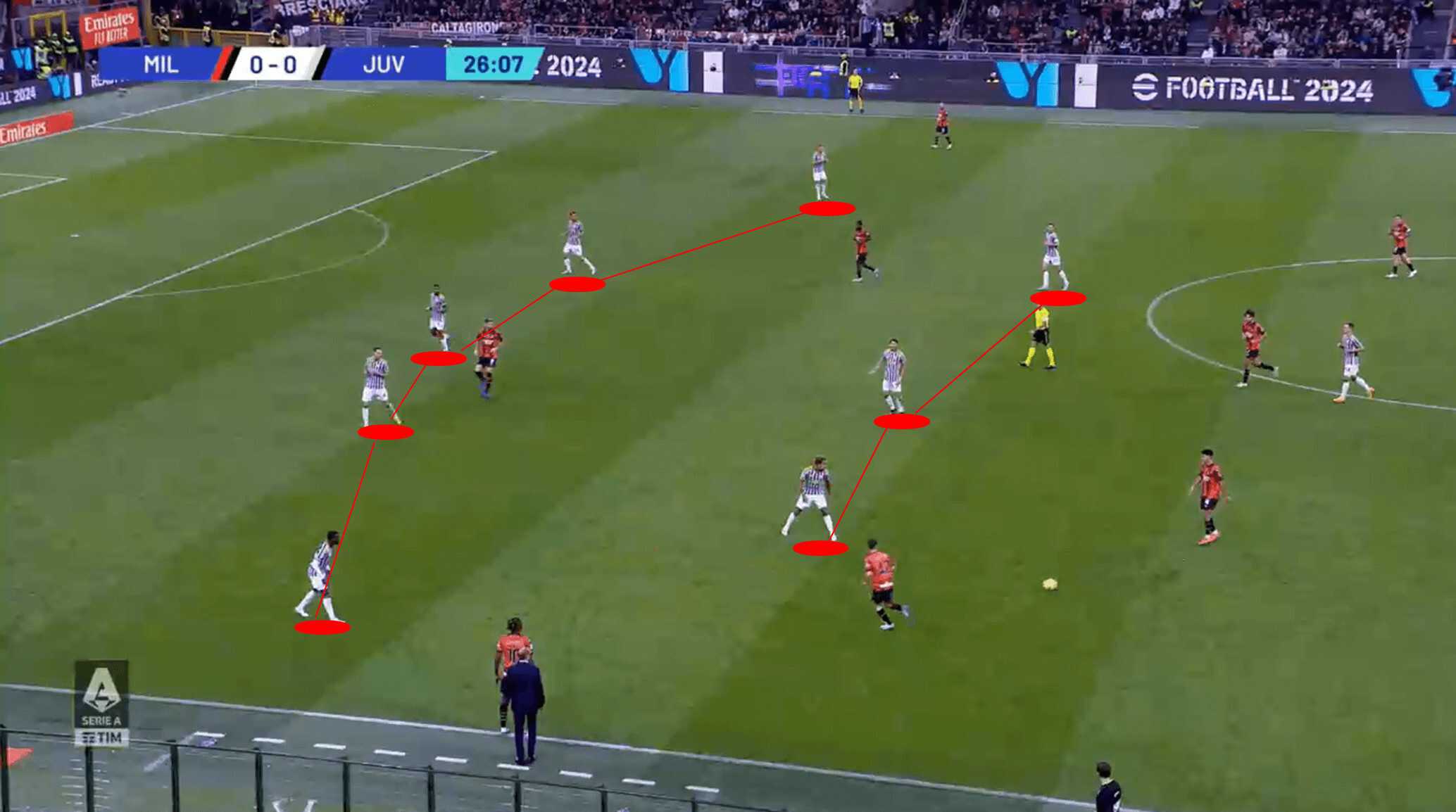
Juve would drop deep, sometimes shifting to a back five, and look to be clinical when the opportunity presented itself.
The game plan would be how to frustrate the opposition, and in the example above, the threat of Olivier Giroud was identified.
Allegri’s side made sure to mark the Frenchman closely to nullify the danger.
During their undefeated run, the approach to matches didn’t mainly win plaudits, but it was appreciated that it was effective.
However, recently, they have lost their way defensively, being more prone to conceding fouls closer to their own penalty area.
They have, consequently, been punished in the last eight fixtures, conceding goals from such set pieces.
Another noticeable shift in the normal solid defensive line is that they have become much less compact of late.
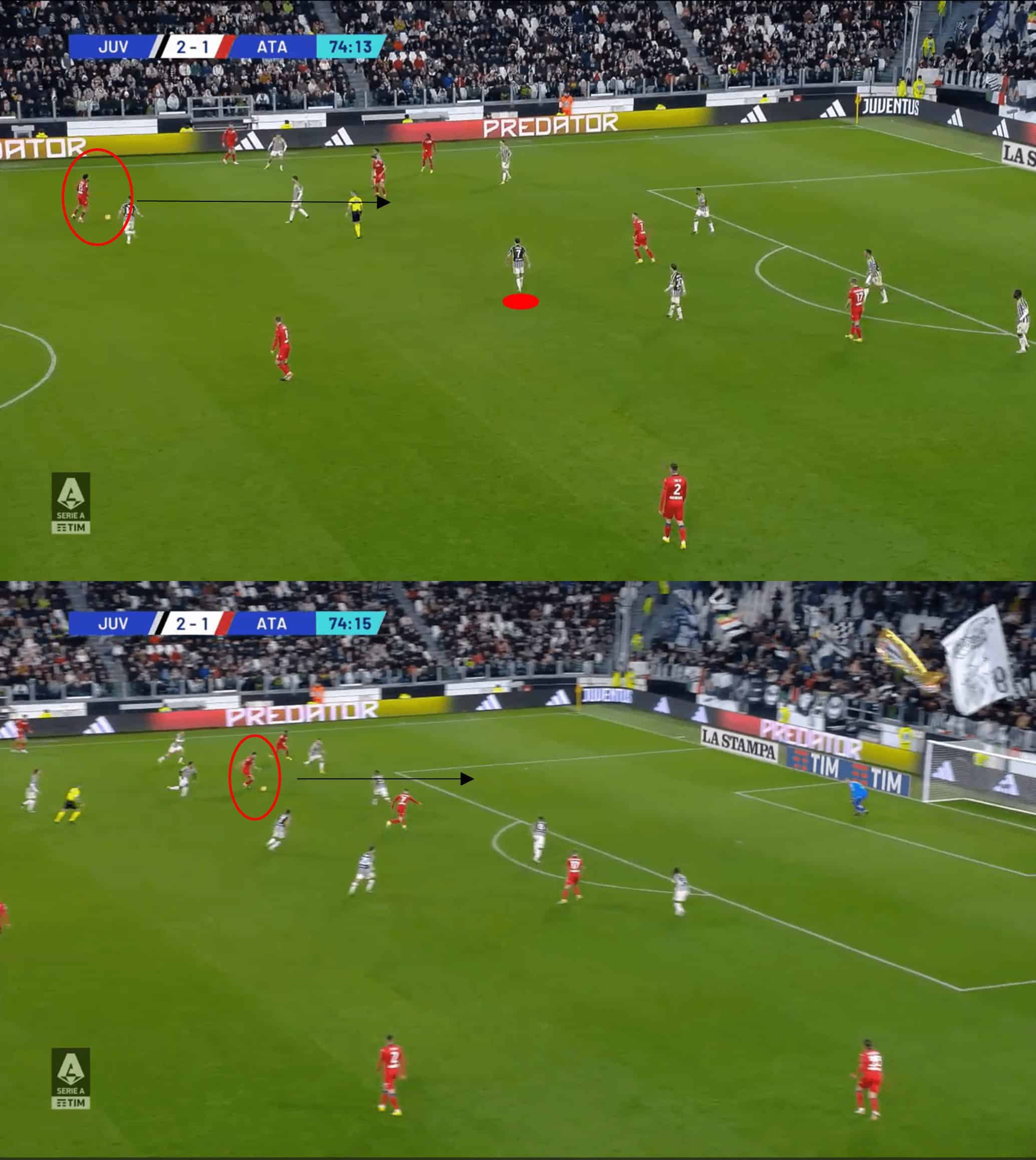
As Juventus adopt a low block, there is a lack of organisation with the stagnated midfield line which has left space between the midfield and defence.
The positioning of Federico Chiesa, who is highlighted in the top image, is away from the ball.
If Juve had regained possession here, Chiesa wouldn’t have been ready to transition from defence to attack.
Atalanta was able to find the pocket of space between Juventus’ midfield and defence, which in turn opened up space in Juve’s backline as the defender was drawn towards the ball.
A through ball was played into the penalty area, and Atalanta equalised.
Chiesa hasn’t been the only player guilty, though, of poor positioning if you take into account Andrea Cambiaso, as seen in the image below.
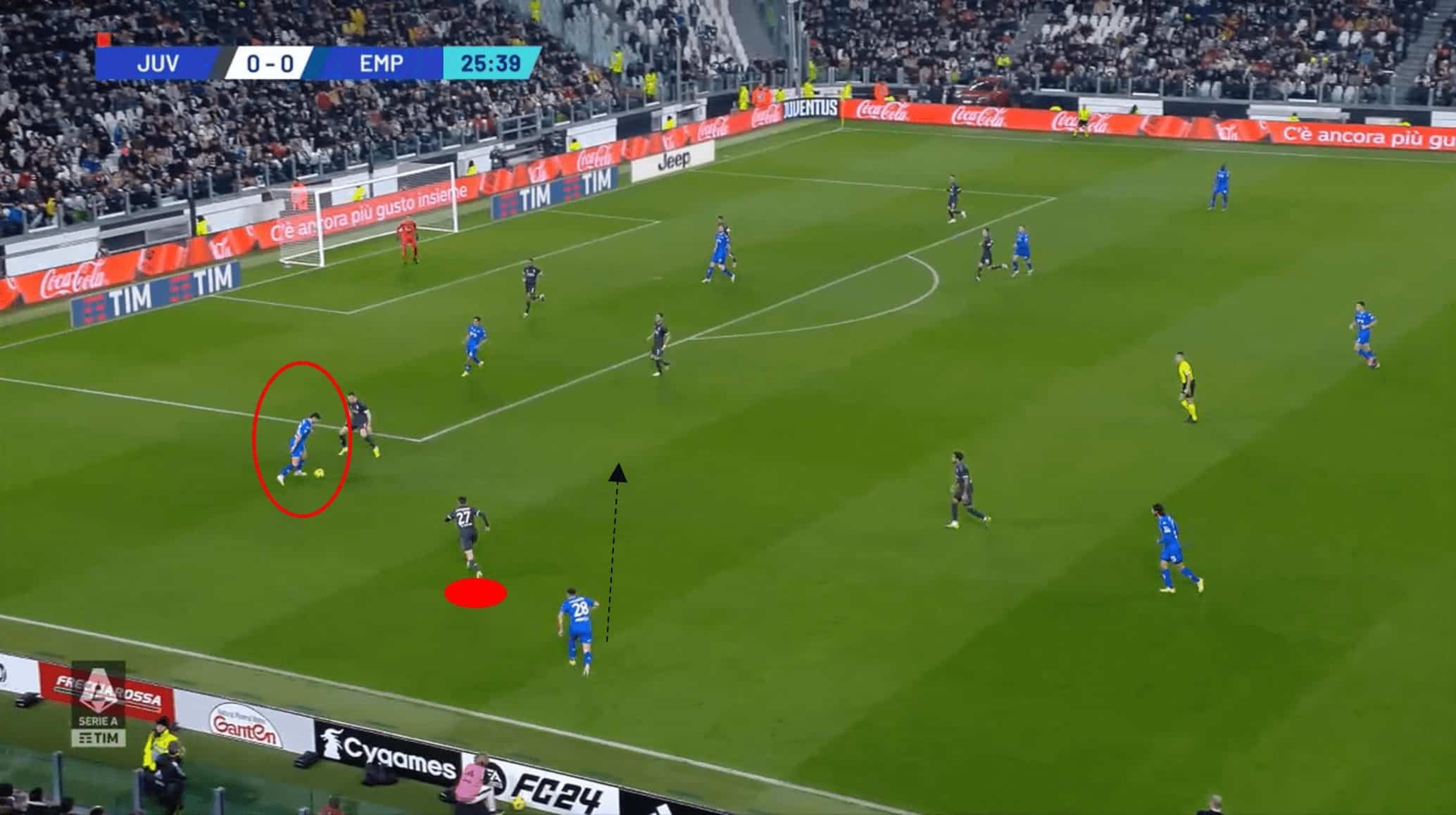
As Cambiaso is drawn to the ball, he neglects Empoli’s Nicolò Cambiaghi behind.
Cambiaghi is then able to run into the vacant space and get a shot away.
His effort is well-saved, but the off-the-ball movement of Juventus and the apparent lack of communication have been factors in their decline from a defensive viewpoint.
As a consequence, opponents have been able to work themselves into more favourable shooting positions.
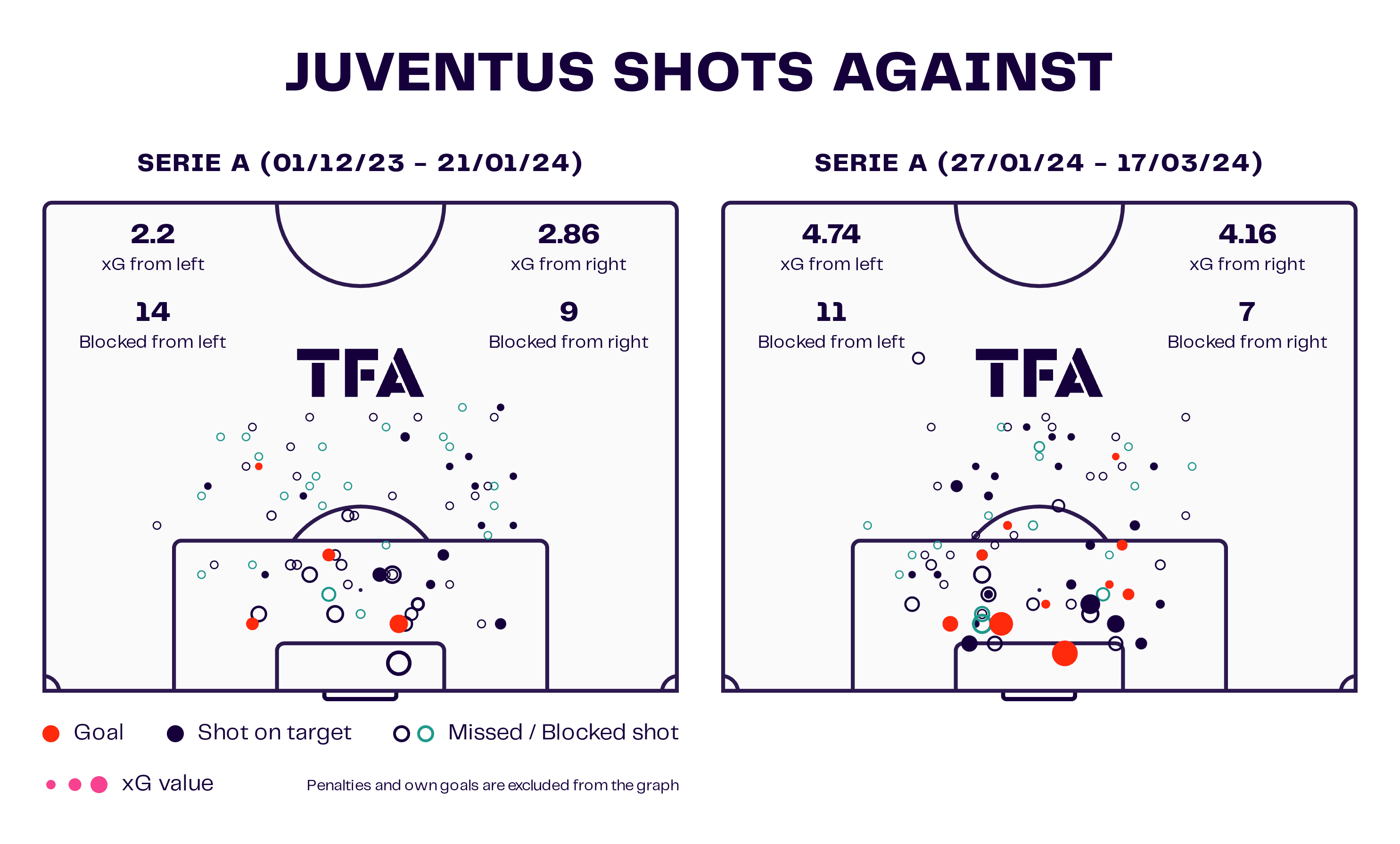
The graphic compares Juventus’ eight league games prior to their recent run of poor form to their last eight league fixtures in which they’ve only won once.
Juve has seen a decline in blocking efforts coupled with an increase in expected goal values.
This shows how teams have been able to carve out promising openings in Juventus’s final third, especially inside the penalty box, where the probability of scoring is generally higher.
However, the defensive problems also stem from the front line.
It has already been alluded to that Juve is not a possession-based side, but they are also not known for their pressing ability.
Juve’s 15.1 PPDA value highlights their lack of press, particularly against their Serie A rivals, as they rank in the bottom five in the division for such a statistic.

Hellas Verona are able to pass out from the goalkeeper with ease as they are not under pressure from the Juve striking options.
Of late, often any attempts to close down the opposition have been quite half-hearted and lacking in intensity.
This lack of intensity transcends through the team in the defensive phases as opponents have been given time on the ball and, hence, time to assess their options.
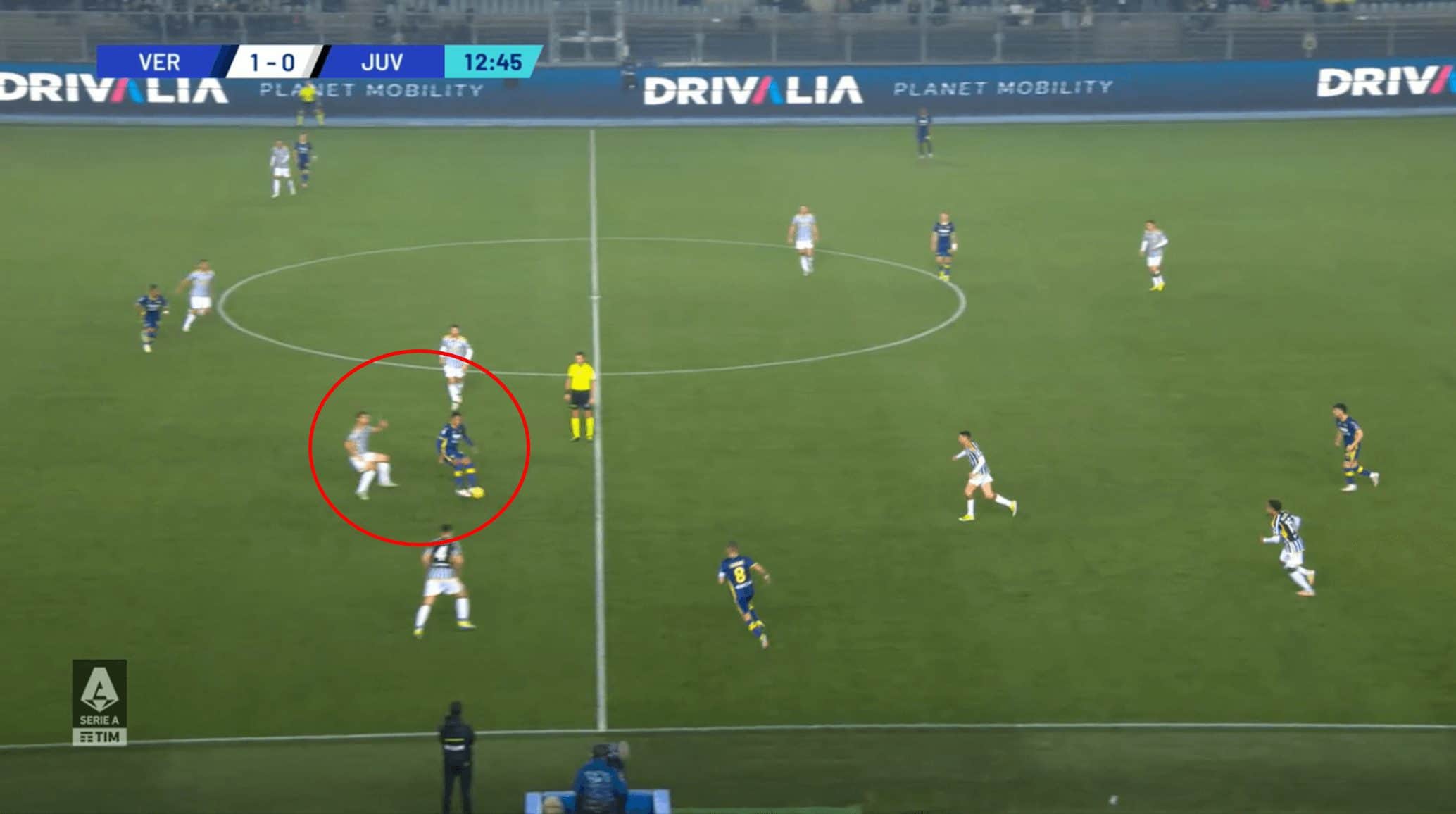
Verona makes a pass that bypasses the midfield, and the ball is flicked on to eventually run in on goal and get an effort on target.
However, once again, Juventus’ positioning could be much improved.
It is common in Italy’s top tier for attacking options to drop deep to link up play.
Firstly, in this case, the defender was too slow in following his marker.
Even if he had kept up with the Verona forward, his positioning is such that Verona would have been able to shield the ball.
Had the defender led with his left side, with surrounding players engaging, the movement could have instigated a press for Juventus.
This would have initiated the start of an attacking phase and put Verona on the back foot.
Toothless up top
The lack of tactical identity has proved harmful to not just the defence, though, as the attack has dwindled in terms of end product.
This in itself has been due to a lack of cohesion in passing and transitional play.
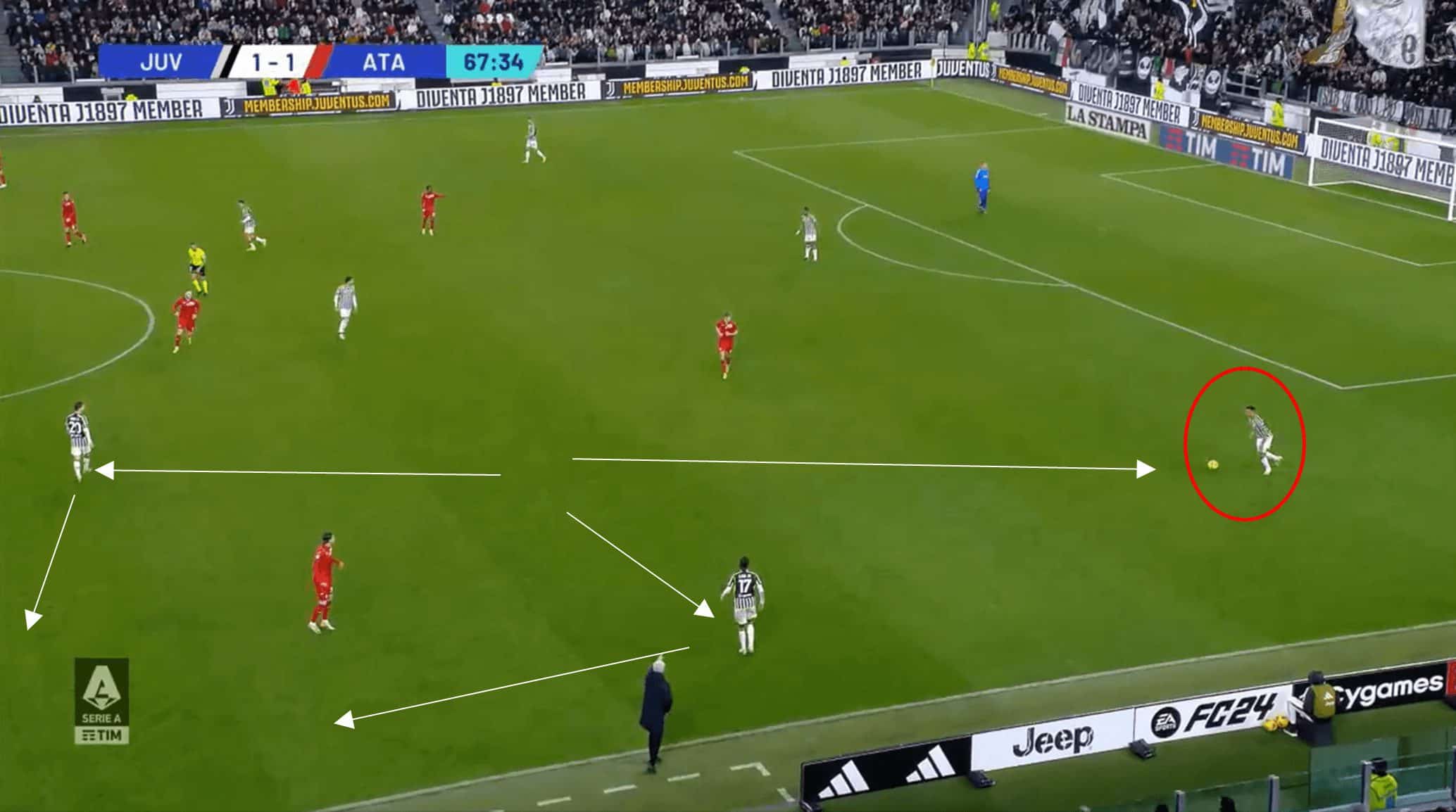
Here, Wojciech Szczesny has passed out to the left side of the back three.
The shape of Juventus is such that you would anticipate movement from within the midfield to provide a passing option where there is currently vacant space, as highlighted.
However, there is no such off-the-ball movement and a long ball down the channel is played instead.
Although they do go on to win a corner, such hopeful punts upfield are not the answer to asserting dominance in a match.
The midfield is crucial here because it is their role to provide the passing opportunities, looking to draw out the opposition midfield in their press.
Juventus needed a passing lane in the midfield to help carve out passing triangles and work possession from defence to attack.
Whilst this example showed Juve playing out from the back, it is not always the case.
They have launched 26% of their goal kicks in Serie A this season.
Moreover, Juve averages 10 launched goalkeeper distributions per 90.
When the keeper does opt to go long, the distribution can, at times, lack accuracy and have no thought to the end goal of the attacking movement.
This forms part of Juventus’ problems in that when they do have the ball; they seem to lack a distinct sense of what to do with the possession and a seeming lack of knowledge or anticipation of teammates’ off-the-ball movements.
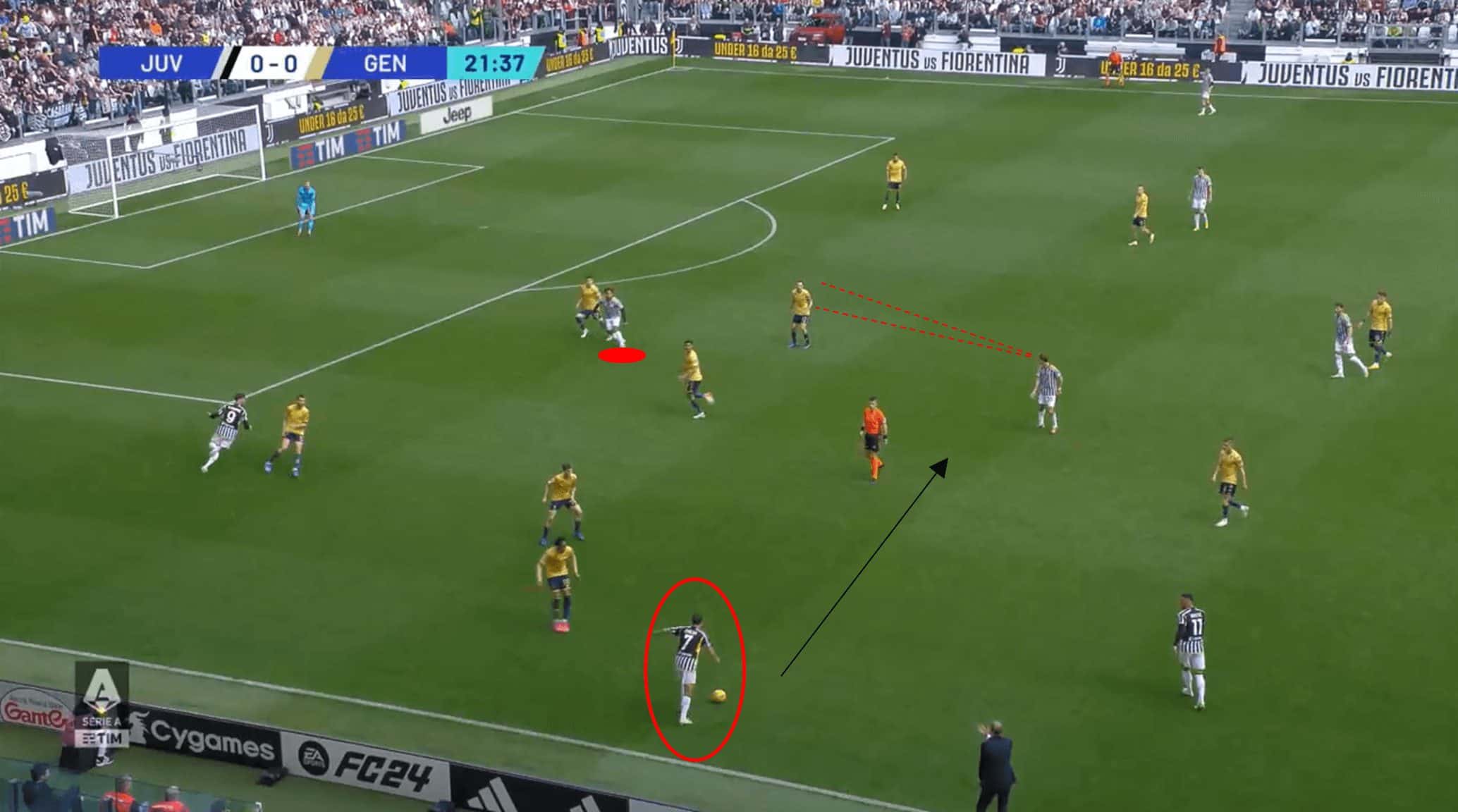
A prime example is above, where the forward hesitantly indicates running into the half-space.
However, Chiesa is not in tune with this and plays a pass centrally.
Despite looking to see the opposition’s positioning prior to the pass, Juve loses possession as Genoa successfully intercept.
This has been a common theme of late where Allegri’s side has been pedestrian with the ball and sluggish in possession.
In the past eight league fixtures, a particular concern has been an increase in being dispossessed high up the pitch.
Juve has seen an unwanted 35.25% increase in dispossession in such areas in the past eight league games compared to the eight fixtures prior.
As a consequence, the opposition has been able to quickly transition from defence to attack, putting Juve on the back foot.
We have already seen in this analysis how the Turin outfit has lost their way defensively, losing their compact shape and has become increasingly disorganised.
With a lack of ideas up top and the tendency to gift possession to the opposition, the pressure is quickly turned back to the weak defence.
Juventus are, therefore, stuck in a harmful cycle.
Conclusion
The main takeaway from this analysis has been how costly it has proven that Juventus have not adopted a unique playing style.
As a consequence, they are a side devoid of ideas in the final third as well as in the transitional phases.
Allegri’s tactics are not pleasing the fanbase, and Juve feels like a team not wanting to play for their manager.
However, as we approach the home stretch of the season, the players will have to put that behind them.
Juventus have found themselves out of the title race and on current form, we have shown they are not on track for a top-four finish.
If they are to have any hope of salvaging something from this disappointing season, they will need to halt the slide.
Juventus need to find a way, at the very least, of winning ugly again and fast.






Comments